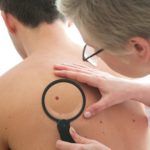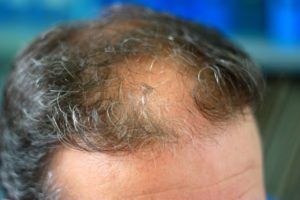Onycholysis: Causes and Treatments
Onycholysis is a condition where the nail separates from the nail bed. It can affect both the fingernails and the toenails, and it can have various causes. Some of the common causes are trauma, infection, allergic reactions, psoriasis, thyroid disorders, and certain medications. Onycholysis can also be a sign of more serious health problems, such as diabetes, anemia, or heart disease.
Onycholysis can cause pain, discomfort, and cosmetic problems. The affected nails may look discolored, thickened, or distorted. They may also be more prone to infection and damage. If you have onycholysis, you should see your doctor or dermatologist for a proper diagnosis and treatment.
Your treatment options may vary, depending on the cause of your onycholysis. Here are some common causes of the condition and the associated treatments.
Trauma
If the cause of your onycholysis is trauma, such as wearing tight shoes or accidental harm to the nail, the best treatment is to avoid further injury and wait for the nail to grow out. You may need to trim the detached nail as it grows to prevent it from catching on things or getting infected. You should also keep the nail clean and dry. In addition, apply a topical antibiotic if there is any sign of infection.
Fungus
If the cause is a fungal infection, you may need to take oral or topical antifungal medications to clear the infection and prevent it from spreading to other nails. Oral medications, such as itraconazole (Sporanox), are more effective. However, if you have concerns about them interacting with other medications, a topical option may be better for you.
Topical medications—such as creams, gels, or lacquers—tend to have fewer side effects but may not work as quickly. You may need to use them for long periods, allowing the infected nail to grow out completely.
Psoriasis
If the cause is psoriasis, you may need to treat the underlying skin condition with topical or systemic medications, such as corticosteroids, vitamin D analogs, retinoids, or biologics. These medications can help reduce inflammation and improve the appearance of the nails. You may also benefit from phototherapy, which uses ultraviolet light to treat psoriatic lesions on the skin and nails.
Chemicals
If the cause is a reaction to the chemicals in nail products, such as nail polish, nail polish remover, or artificial nails, you should stop using these products and switch to hypoallergenic or natural alternatives. You should also avoid using harsh detergents or solvents that can irritate the nails. Moreover, you may need to apply moisturizers or oils to hydrate and protect the nails.
Systemic Conditions
If the cause is a systemic condition, such as hypothyroidism or diabetes, you should see a physician and follow their instructions concerning treatment. In some cases, as the systemic condition becomes better controlled, the degree of nail attachment increases.
Onycholysis can be a distressing condition that affects your appearance and self-esteem. However, with proper diagnosis and treatment, you can restore your nails to their normal health and beauty.
Onycholysis can take several months to heal completely. During this time, you should follow your doctor’s advice and take good care of your nails. You should also monitor your nails for any signs of worsening or recurrence of onycholysis. If you notice any changes in your nails, such as increased pain, swelling, redness, pus, or odor, you should contact your doctor immediately.
Onycholysis is not a life-threatening condition, but it can affect your quality of life and self-esteem. If you believe that you suffer from onycholysis, contact East Carolina Dermatology and Skin Surgery, PLLC. We can diagnose the cause of your condition and help you manage it effectively.










